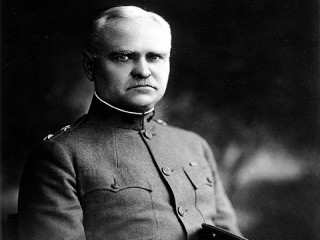
George Washington Goethals biography
Date of birth : 1858-06-29
Date of death : 1928-01-21
Birthplace : Brooklyn, New York, U.S.
Nationality : American
Category : Arhitecture and Engineering
Last modified : 2011-05-13
Credited as : US army officer, and civil engineer, the Panama Canal
U.S. Army officer and engineer George Washington Goethals succeeded in building the Panama Canal after many others had failed.
On June 29, 1858, George W. Goethals was born in Brooklyn, N.Y., to a Dutch immigrant family. Intending to become a physician, he attended the City College of New York for 3 years. He then won a coveted appointment to the U.S. Military Academy at West Point, from which he graduated in 1880, second in a class of 52. He was one of two members of his class selected to go on to engineering school.
From 1882 to 1903 Goethals served with distinction on projects dealing with river and harbor improvements. He taught engineering at West Point (1885-1889, 1898-1900) and was assistant to the Army chief of engineers (1894-1898). During the Spanish-American War he was chief engineer of the I Army Corps, and from 1903 to 1907 he was on the general staff of the Army.
Meanwhile the United States had begun construction of the Panama Canal, but the Isthmian Canal Commission and the two civilian engineers who headed the project had made slow progress. In 1907 President Theodore Roosevelt decided to place a military engineer in complete charge, picking Goethals over many other talented engineering officers.
Combining administrative ability with professional skill, Goethals overcame enormous obstacles of engineering, climate, disease, and living conditions before the canal was officially opened in 1914. The most difficult part of building the canal, Goethals later wrote, was the problem caused by the "human element." As many as 45,000 persons, of many nationalities and speaking a variety of languages, worked on the canal. Goethals made himself accessible to all, heard complaints, visited every aspect of the project, and had an uncanny mastery of the smallest details. In the process, sanitary officer William C. Gorgas succeeded in eliminating yellow fever.
Goethals served as governor of the Canal Zone from 1914 to 1917. During World War I he was in charge of the purchase, storage, and transport of all supplies and the movement of all troops within the United States and overseas, winning the Distinguished Service Medal for his achievements. After retiring from the Army in 1919, he was a private consulting engineer on many important projects, including the Holland Tunnel and the George Washington Bridge, connecting Manhattan and New Jersey, and the Goethals Bridge, connecting Staten Island and New Jersey. He died on Jan. 21, 1928, and was buried in the Army West Point cemetery.

















